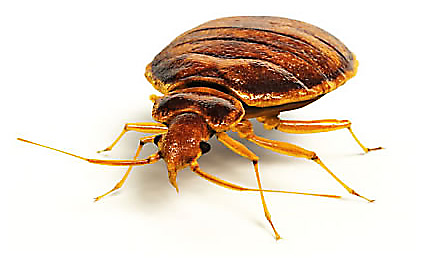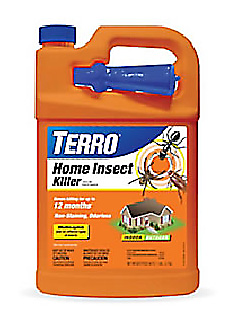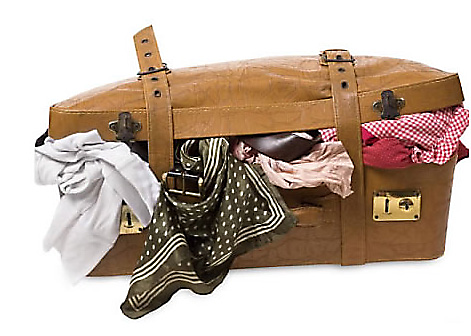Sleep Tight; Don't Let the Bed Bugs Bite
This playful bedtime rhyme that we heard as kids can turn into a living nightmare when a bed bug infestation becomes reality. These tiny creatures can force people out of their homes and even cause serious psychological distress. If you suspect that bed bugs have invaded your home, it’s important to first know what they look like.

Appearance
Belonging to the cimicidae family, bed bugs are flat, oval-shaped pests that feed exclusively on blood. Adults are typically a light brown or reddish color while nymphs (babies) are almost translucent and can appear red and swollen after feeding. Comparable to the size of an apple seed, these pests can be challenging to find and tend to stay hidden during the day.
Behavior and Habitat

Bed bugs typically reside in mattresses or box springs because they provide easy access to food and an ideal environment for reproduction. They can also be found in bed frames, appliances, furniture, carpets and around baseboards. Hotel beds, taxis, dorms, airplanes and buses can easily host bed bug infestations and this is typically how people bring them into their homes.
Bed bugs prefer to do their feeding at night and retreat into the depths of the mattress by day. In cool environments, bed bugs lay dormant and can survive for up to a year without food, which makes infestations hard to discover.
Detecting an Infestation
If you suspect a bed bug infestation, the first thing to do is inspect. Look closely at your mattress, especially around seams and in the box spring for live bugs or their remnants. Nymphs shed skin as they grow, so you will often detect the presence of dead skin or black stains from fecal matter before the actual bug.
After feeding on your blood, bed bugs can leave itchy red bites all over your body. They’ll feed on any exposed skin. Since other bugs like fleas or mosquitoes also cause red, itchy welts, you need to find a bed bug (or signs of them) to confirm an invasion and take action to eliminate it.
How to Get Rid of Them
If you do a bit of light research about bed bugs, you’ll find hundreds of horror stories that will make your skin crawl. Infestations can get so large that people are forced to destroy their belongings and even move out of their homes. If you’re suffering from an invasion, use some of these strategies, and if things don’t clear up, call a pest control professional.
• Wash all bed linens in hot water and dry on the highest setting for at least 45 minutes; bed bugs are sensitive to extremely high and low temperatures. You can also wash clothes and blankets using this method.
• Items that can’t be washed, such as shoes, stuffed animals and small pillows, can be placed in the dryer for 45 minutes on the highest (hottest) setting.
• Bed bugs can infest anything. From alarm clocks and TVs to books and toys, these guys will hide just about anywhere. Treat these items by bagging them in clear bags and placing in direct sunlight on a hot day (at least 90°F) for a couple afternoons. You can also put the bagged items in a deep chest freezer for at least 8 hours. If freezing or scorching the bugs isn’t possible, clean with hot, soapy water or rubbing alcohol.
• Vacuum the entire room, especially around the baseboards and bed. Immediately dispose of the bag or empty the canister and keep the vacuum outside in a plastic bag for a few days afterward to kill any bugs stuck inside.

• Get a tightly sealed bed bug-proof encasement for the mattress and box spring to prevent the bugs from entering or escaping. Be sure to keep this on for at least a year since they can survive this long without food.
• Bed bugs don’t limit themselves to the mattress, so it’s important to treat your bedframe as well. Use an insecticide spray or powder to do this, and make sure that it’s safe to use indoors and around bedding.
• Place bed bug interceptors under the feet of the bed frame. These keep the pests from climbing onto your newly sealed mattress. You can purchase these online, use bowls of baby powder or TERRO® Spider & Insect Traps.
• Spray the interior of the house (around baseboards, doorframes and windows) with TERRO® Home Insect Killer to provide longer-lasting control.
You’re probably realizing that bed bug extermination takes a lot of work. They are masters at hiding and tend to infest just about everything. Take a deep breath and try not to get too overwhelmed. The trick is to be overly efficient and treat everything in the room or home using the tips above. If you live in an apartment or dorm, inform the manager in case professional measures need to be taken. Also be sure to check your lease, as notifying the property manager may be required. Remember to take preventative measures after the invasion is resolved.

Prevention
Bed bug infestations tend to spring up out of nowhere, and it’s impossible to completely prevent them from happening. If you’re staying in a hotel, examine the bed and box spring for traces of bugs and keep your luggage off the floor and away from the bed. Look carefully at your items before packing them away, and place your clothing immediately in the washer or dryer when you return home.

Psychological Distress
In rare cases, bed bug infestations can cause psychological problems. After dealing with an invasion, people sometimes become paranoid and live in constant fear. Depression, psychosis, PTSD and even suicide have been related to bed bug invasions. This is more evident for those who have a predisposition for certain psychological conditions.
If you believe that you’re suffering from any psychological distress due to a bed bug invasion, visit a mental health professional immediately. There are also support groups online that can help ease bed bug anxiety.
Ease Your Mind
Many people think that bed bugs are associated with dirty areas, but they are often found in the cleanest environments. Try not to blame yourself for having an invasion because they are sometimes very hard to avoid. Exterminating these pests is a stressful process no matter what, so prepare to face some challenges, but with hard work and diligence, you will live in peace again.
Not Yet Satisfied?
- Learn more about Bed Bugs in our Insect Library
- Continue to our Bed Bug Control Products »
